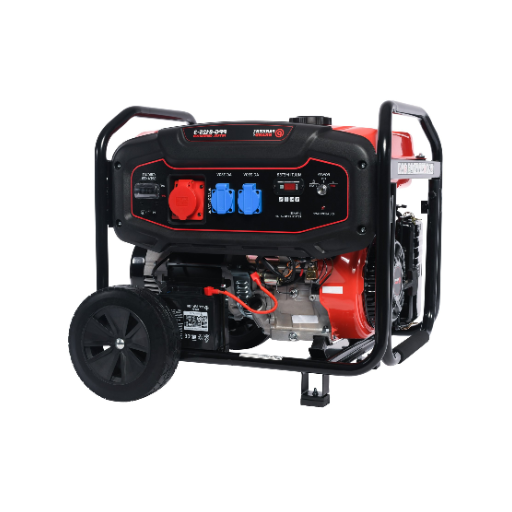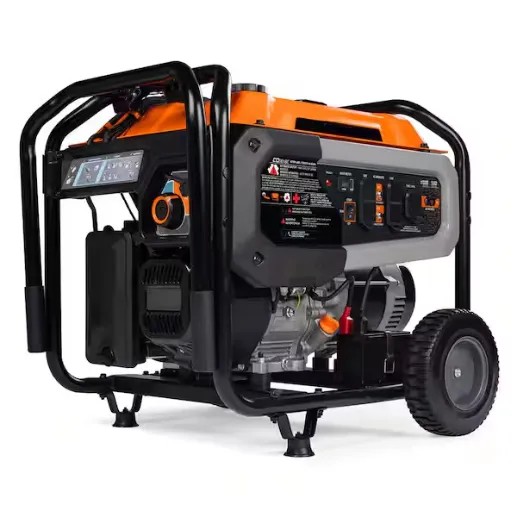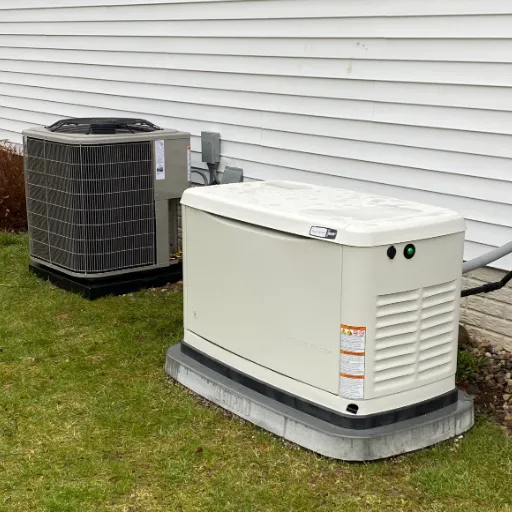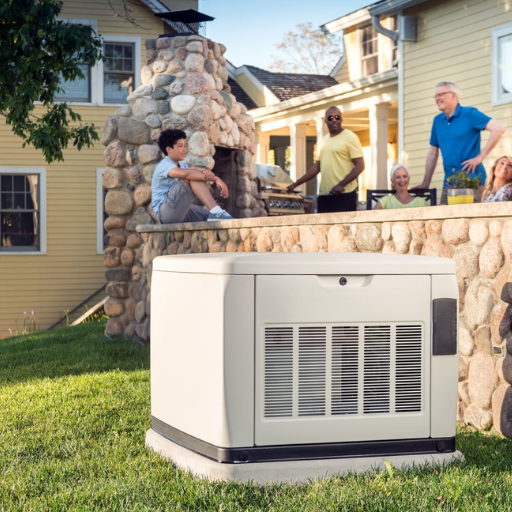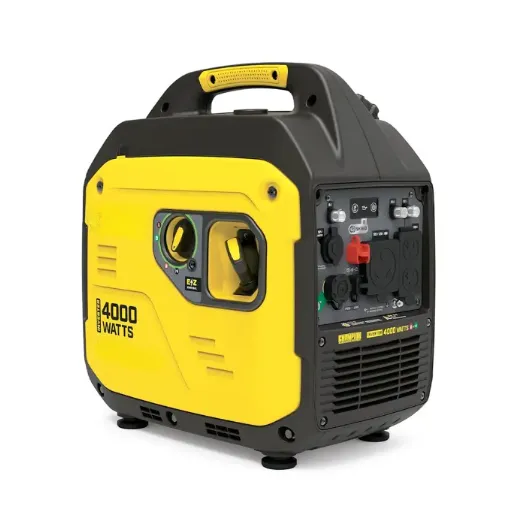Electric generators have become indispensable tools in a variety of scenarios, ranging from emergency backup power during outages to reliable energy sources for outdoor activities and remote projects. With advancements in technology, modern portable generators are designed to be more efficient, durable, and versatile than ever before. This article provides a comprehensive guide to the top 10 electric generators currently on the market, carefully selected based on performance, reliability, and adaptability to different needs. Whether you’re preparing for unforeseen events, seeking power for construction sites, or planning a camping trip, this guide will help you identify the best generator to match your unique requirements. We analyze key specifications and the pros and cons of each model to ensure you make an informed decision.
How to choose the right portable generator for your needs?
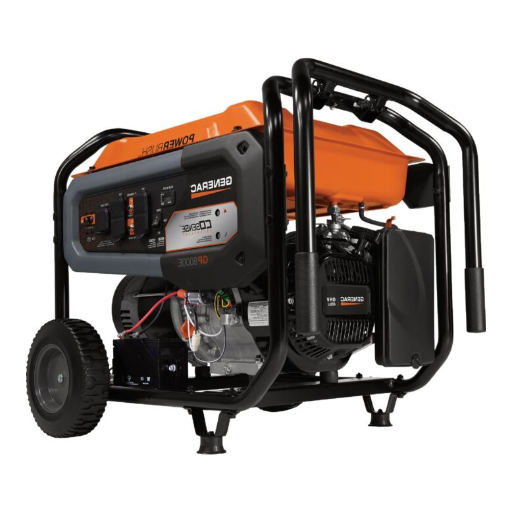
Determining your power requirements: wattage and appliances
For choosing the right generator, it is most important to establish power requirements. Make certain that you calculate the total wattage necessary to run the devices or the tools that you intend to power. This comes from running watts (continuous power required) and surge watts (excess power needed to kickstart specific machines like refrigerators and air conditioners).
- List all devices and appliances: Enumerate all the devices planned for use, including, but not limited to, the lights, medical gadgets, refrigerator units, and even prescriptive or recreational powered tools from the generator.
- Identify requirements by wattage: Look into each device’s user manual or check the specifications for running and starting wattage information for every order.
- Sum energy consumption: When calculating, add up the running Watts of all devices individually. Most importantly, add the greatest single surge wattage with the assumption that this surge wattage occurs momentarily. As an example, If all your appliances together need 3 thousand running watts and the single surge wattage is 1200, then the generator need should be above 4200 watts.
- Ensure operational buffer account: Select a generator in the range between ten to twenty percent higher than your estimated requirement so additional loads can be handled with safety and efficiency in the long run.
Understanding the appliance wattage along with these steps makes it easier for you to choose a generator that can operate safely and efficiently at the required power level.
Fuel types: gasoline, propane, and dual fuel options
The advantages of gasoline, propane, and dual fuel generators depend on the purpose these generators will be used for, available storage, and the expected fuel supply around the site of work.
- Gasoline Generators: These generators are the most widely used and easiest to find. Gasoline is difficult to store when the shelf life is considered, due to its volatility, and often has a shelf life of 3-6 months untreated, however, gas does have high energy density, which makes these generators portable. Based on the model and design, gasoline generators may provide wattages ranging between 1,000 to over 10,000 watts.
- Propane Generators: Propane is easier to store and burns cleaner than gasoline, this makes it optimal for long term storage purposes. These generators are often able to output a constant supply of energy even in cold weather due to being stored in pressurized tanks. Propane burns cleaner than gasoline as it produces fewer emissions and has a longer shelf life; however, propane generators usually produce less wattage, with output around 3,000 to 6,000 watts.
- Dual Fuel Generators: These combine gasoline and propane into one fuel system, allowing for greater flexibility, variety, and added ease of use. For example, a dual-fuel generator might generate 9,000 watts using gasoline and 8,100 watts using propane. Providing flexibility and convenience to the user for various use cases, this feature is especially useful in emergencies or during times with limited fuel availability.
Every type of fuel has its pros and cons. Evaluating runtime, emissions, price, and wattage helps you choose what meets your fuel system’s needs.
How much does a portable generator cost?
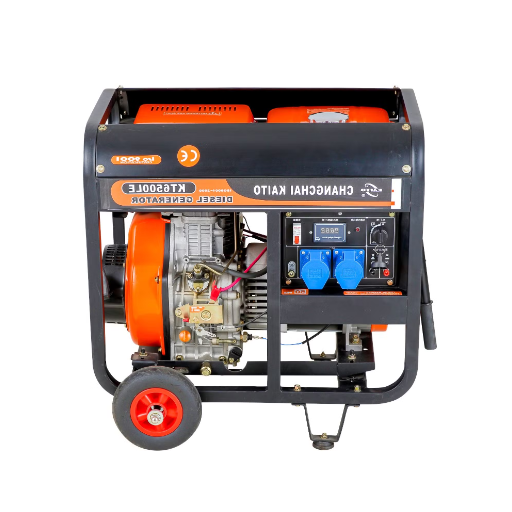
Price ranges for different types and sizes of generators
The cost of portable generators differ significantly due to their fuel type, power output, additional features, and the quality of the device. Small units designed for camping where weight and volume need to be kept minimal are typically in the $300 to $800 range. These generators often offer a maximum of 1,000 to 2,000 watts of power, while maintaining quiet operation and being fuel efficient. This makes them extremely suitable for outdoor activities.
Prices for mid-range generators that offer 3,000 to 5,000 watts of power, enough to aid appliances such as refrigerators or other electronic devices, range between $500 to $1,500. These units can also have sophisticated features like stabilised inverter powered fuel delivery systems and multiple fuel options.
Larger home backup generators or worksite generators with power over 6,000 watts almost always have a price exceeding $1,000 but can go all the way to $3,000 or more. The same goes for larger generators. There are added advanced features like electric start systems, high capacity fuel tanks, and increased durability for harsh operation, which balance out the demands.
A user also need to consider additional factors for their usage such as total harmonic distortion (THD) with sensitive electronics, noise levels (measured in decibels), fuel waste rates (e.g. gallons per hours at fifty percent load) and run time at a particular load. Making sure these blend with your needs will ensure you make the appropriate purchase.
Factors affecting generator prices
Several important factors chiefly arising from technical characteristics, quality of construction, and other features influence the price of a generator. These factors have been elucidated below:
- Power Output (kW): The cost usually goes up with power output as more expensive parts and greater engineering effort are needed.
- Fuel Type: Generators can be powered by gasoline, diesel, natural gas, or propane. As an illustration, diesel generators tend to be more expensive because of their efficiency and long life.
- Engine Performance: Often, higher models include features like Variable Speed Technology or simply larger engines, which elevates the price.
- Noise Level: Specialized noise-dampening technology makes generators with better soundproofing, or those operating under 60 decibels, more costly.
- Total Harmonic Distortion (THD): Such generators equipped to give stable energy for sensitive electronics (mostly THD <5%) are expensive.
- Runtime and Fuel Efficiency: Higher cost is attributed to models designed for longer runtimes and lower fuel costs due to advanced engineering.
- Portability and Design: Price tends to increase for light, compact, or wheeled models made with heavy-duty steel.
- Durability and Weather Resistance: Such models with anti-corrosion coating and weatherproofing spend protective enclosures are more expensive, but yield longer life.
Considering these factors with your specific needs enables you to choose an optimal solution where cost and function do not contradict one another.
What safety precautions should I take when using a portable generator?
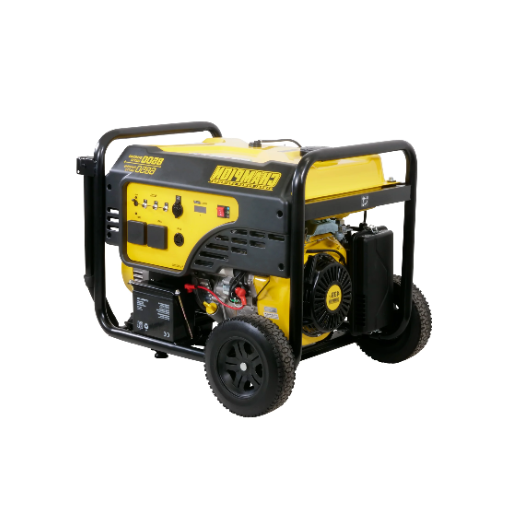
Preventing carbon monoxide poisoning: proper ventilation and placement
To ensure minimal risk of carbon poisoning via a portable generator, the following safety techniques must be adhered to:
- Generators must be placed outside: A portable generator must never be used within a structure. CO accumulates in rooms that are semi-enclosed, which may result in being dangerously toxic. Practically, the generator should be at the very least 20 feet away from doors, windows, or vents.
- Placing it further from buildings and enclosed areas is recommended: In order to promote the diffusion of exhaust gases, the generator must placed in an area of adequate ventilation.
- There must be indoor CO detectors: For the indoor areas where there is a nearby CO detector, an alert must be activated when CO reaches a dangerous level, which makes it critical for there to be sufficient amounts of detectors near indoor areas.
- Exhaust system must be directed away from structures: To reduce the risk of generating exhaust being reintroduced, the exhaust system must be directed away from areas that are actively being occupied.
Implementing the most common safety rules is important to significantly lower the risk of being poisoned while ensuring that the portable generator is being used safely.
Electrical safety: grounding and overload protection
Safety measures such as bringing a generator to a ground and protecting it from overload are important for operating any electrical machinery with ease, and portable generators are not any different. Grounding points are what is known as an “earth.” The examiner can get rid of out-of-place current. In layman’s terms, the examiner is free from the electrical shock. When grounding a portable generator, always connect it to a grounding wire as specified by the manufacturer. The grounding rod should be a conductive material, and it also needs to be at least 8 feet deep to properly dissipate.
By having a built-in circuit breaker, overload protection is easy to achieve. To avert an overload from occurring, the user should make the total wattage of each device that is linked to the generator not exceed 80% of the generator’s rated output. To illustrate, a 5000 watt generator should be given no more than 4000 watts if constant use is desired.
With these pieces of advice, it would be much easier to deal with electric shock, equipment damage, and fire hazards. These tips should be straightforward and effective with essential electrical safety practices.
Fuel storage and handling guidelines
Fuel storage and handling require the utmost attention for safe generator use and long-term operational efficiency. Containers should be approved for use, well labeled, and meet the standards of OSHA or NFPA to enable safe, legal storage of combustible liquids. Poor storage practices, such as placing fuel containers in areas with sources of high temperature, sunlight, or open flames, should be avoided to reduce the likelihood of ignition. Fuel container caps should be sealed adequately to enable storage without risk of evaporation or contamination.
Long-term fuel storage may require treatment with stabilizers to maintain the desired level of quality, particularly with gasoline, which goes stale after three to six months. With proper measures, diesel fuel can be stored for up to 12 months, but the treatment of biocide for microorganism prevention may be necessary. Fuel should be checked systematically for signs of contamination, and funds with signs of contamination should be disposed of by eco-friendly standards.
When it comes to handling materials, spills and static discharge can be avoided by using a funnel and grounding techniques. An operating generator should not have its fuel tank filled. Rather, expansion space should be left, and the generator should be allowed to cool off before being refueled. Manufacturer regulations regarding fuel type should also be followed,d such as the use of unleaded gasoline 87 or ASTM-certified diesel. Always refueling while maintaining a safe distance from living spaces ensures that the safety and carbon venting standards are also being followed.
How do I maintain and care for my portable generator?
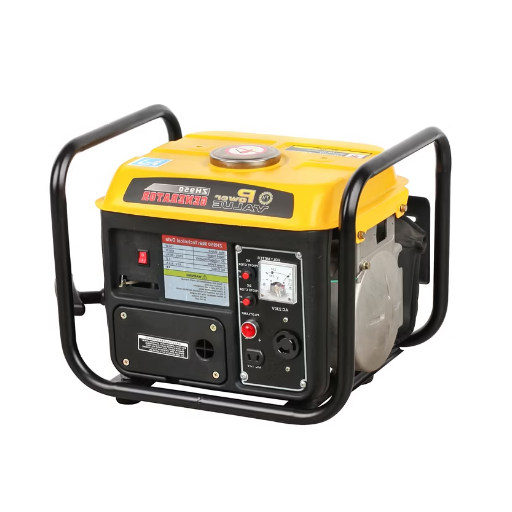
Regular maintenance tasks to ensure longevity
Maintaining generators is essential for long-term functionality, which is why I take steps to follow both the manufacturer’s guidelines and optimal operational procedures. For starters, I ensure the engine oil changes by the user manual’s instructions—I typically change the oil after 20 to 50 hours of operation or after each season. In addition, I replaced the engine oil with SAE 10W-30, which offers the best performance in varying temperatures. When servicing the generator, I change the air filter every 100 operational hours. If the air filter is not changed, the airflow becomes clogged, and efficiency diminishes.
An equally important component, the spark plug, needs to be replaced annually or after every 200 operational hours to ensure that ignition is efficient. Similarly, fuel affects the generator’s performance; therefore I use fresh unleaded gasoline with at least 87 octanes or ASTM certified diesel, depending on the generator’s specifications. Any unused fuel that could go stale is drained or treated with a stabilizer to prevent damage to the carburetor.
Finally, maintaining my generator so that it will remain functional for years to come requires semi-regular manual checks, such as examining connection points on the generator and taking the time to tighten any loose bolts. Additionally, I put my generator under a load for half an hour or so every month in an attempt to reduce moisture accumulation in the engine. These activities and maintenance steps guarantee the reliability and overall efficiency of the generator.
Proper storage techniques for off-season
To properly store my generator during the offseason, I take a series of steps that ensure it remains functional and its components are in working condition when needed. To begin, I scrub the entire machine clean to remove any dirt, grease, or debris that might encourage corrosion or mechanical wear. For fuel systems, I either drain the tank completely to prevent gum and varnish build-up or add a fuel stabilizer if any fuel is left in the tank; this is important for gasoline-powered systems, as it minimizes degradation over time.
Following that, I check the engine oil and change it if necessary to remove any contaminants that could settle and degrade the engine. I also take off the spark plug, spray a light coat of fogging oil into the cylinder, and pull the recoil starter gently a few times to coat internal components to prevent rust. Another priority is battery maintenance – if my generator has a battery, I make sure to disconnect and store it in a cool, dry place while trickle-charging it periodically to maintain the charge.
I avoid condensation damage to electrical components by maintaining storage temperatures between 32°F and 104°F (0°C to 40°C) and controlling relative humidity to less than 60%. Many moisture problems can occur within these bounds, and they must be avoided at all costs. For that reason, I use a breathable, waterproof cover for the generator that prevents dust from settling on it while simultaneously allowing some airflow and reducing the chances of mold or mildew occurring.
I have continued these routines and storage protocols and have yet to experience any enduring performance issues with my generator at this time.
What are the alternatives to gas-powered generators?
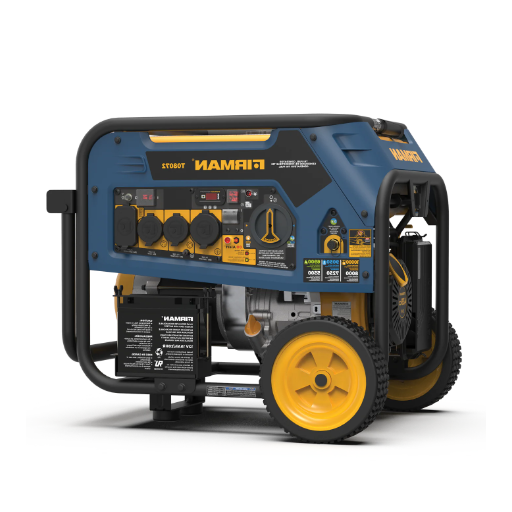
Solar-powered generators: pros and cons
In my prior encounters, there are some advantages and disadvantages solar powered generators have which one must be keen on. To start with, these generators harness renewable energy and, as a result, do not have greenhouse gas emissions. Because there is no combustion engine involved, these generators are exceptionally quiet, depending on the use. Also, minimal maintenance is required because there are no moving parts that need to be serviced or refueled.
However, there are some limitations. One of them is that their ability to generate power is directly dependent on the sun. For instance, a 100W solar panel will offer at least 500Wh of energy in optimal sunlight conditions, otherwise, this figure might be too minuscule for high-energy-demand appliances. Moreover, the storage capacity is significantly lower when compared to gas generators. It is estimated a solar generator will resort to 1,000Wh, which is superior relative to large gas-powered competitors, but still insufficient.
None the less, without considering the added cost of extra solar panels that allow for quicker or larger charging, the initial installment of solar-powered generators is quite expesnive. Removing the added expenses, I have noted that these generators works best for some particular scenarios where small sized electronics and light appliances need to be charged or powered during off the grid situations. Whether or not these devices are helpful completely relies on the desired energy needs, the running time, and the ability to withstand changes in sunlight exposure.
Battery-powered portable power stations
When it comes to battery-operated portable power stations, it is important to keep in mind that their versatility and functionality stem from multiple technical factors.
- Energy Requirements: Usually, these power stations range from 250Wh to above 2,000Wh in capacity. Lower capacity devices ranging from 250Wh to 500Wh are best suited for powering small electronics such as smartphones, laptops, and LED lights. These devices are also considered higher capacity models, such as mini refrigerators or CPAP machines, and can be used for other larger equipment with higher power/energy demand ranging from 1,000 Wh to 2,000Wh per hour but are only useful for a limited period.
- Running Time: As for the power and energy capacity of a device, the running time will differ. A good example would be a 500Wh power station combined with a 50W device, the running time would be approximately 10 hours (500Wh ÷ 50W = 10 hours). This value may be lower based on factors such as continuous draw or inefficient device conversion.
- Sunlight Exposure: Charging efficiency relies heavily on the wattage solar panels produce and the solar intensity. For example, a 100W panel under good sunlight conditions would take around 5 to 10 hours under ideal conditions to fully recharge a 500Wh station. Stretching the time will be further variable based on certain conditions in sunlight, such as cloud cover.
- Durability and Longevity: Most of these power stations utilize lithium-ion or LiFePO4 battery technology. While lithium-ion batteries have a higher energy density and are lighter, they typically last for around 500 charge cycles. LiFePO4 batteries, on the other hand, have a lower energy density, are heavier, and endure around 3,000 cycles, offering lower cost per cycle but at a greater upfront cost.
In conclusion, a battery-powered portable power station is only as good as how well its specifications are aligned to its intended application. With adequate foresight and consideration of capacity, runtime, and environmental charging limitations, optimal use for off-grid or emergencies can be ensured.
Emerging technologies in portable power generation
The focus of emerging technologies for portable power generation is improving energy efficiency, mitigating environmental damage, and making it easier to use for diverse applications, and one advancement is the implementation of solid-state batteries. These batteries forego the traditional liquid electrolyte used in lithium-ion designs. The benefits of increased energy density, evaporated ion charging, faster charging, and higher safety from leakage or combustion stand as solid-state batteries having over 400 Wh/kg and traditional batteries having 250 to 300 Wh per kg prove revolutionizing portable power solutions feasible.
Further development can be seen in the hybrid systems combining advanced fuel cell technologies and battery storage. Hydrogen fuel cells are now deemed as more useful because of their high energy yield and emissions-free operation. These cells are compact and efficient as one gram of hydrogen burns steadily and produces approximately 33.6 kWh of energy.
High-efficiency solar panels using perovskite materials can now expand the driving force of these panels and increase their energy conversion efficiency beyond 25 percent, surpassing traditional silicon-based panels. Such controllers also enable optimization for solar charging under variable light conditions along with Maximum Power Point Tracking (MPPT) controllers.
The latest development in the field of power generation is the integration of portable power systems with AI. Unlike other systems, these portable power management systems are more intelligent and capable of actively monitoring and optimizing power consumption through the use of algorithms. They predict load requirements, optimally allocate resources which increases efficiency as well as battery life. These advancements in technology are results of the everchanging energy demands of today.
Reference sources
Frequently Asked Questions (FAQs)
Q: What is the difference between standby generators and portable generators?
A: Standby generators are permanently installed and automatically provide electricity during power outages, while portable generators are mobile devices that can be moved and used in various locations. Standby generators typically have higher power output and can power an entire home, whereas portable generators are better suited for outdoor activities, job sites, or powering small appliances during short-term outages.
Q: How do inverter generators differ from conventional generators?
A: Inverter generators produce cleaner and more stable electricity, making them ideal for sensitive electronics. They are typically more fuel-efficient, quieter, and lighter than conventional generators. Many inverter generators, such as some Honda generators, are known as super quiet inverter generators, making them perfect for camping or tailgate parties.
Q: What is a dual-fuel portable generator?
A: A dual-fuel portable generator can run on two different types of fuel, typically gasoline and propane. This versatility allows users to choose the most convenient or cost-effective fuel option. Some generators, like certain Westinghouse models, even offer tri-fuel capabilities, running on gasoline, propane, or natural gas.
Q: How many watts do I need from a generator to power my home?
A: The number of watts you need depends on the appliances and devices you want to power. A general rule of thumb is to add up the wattage of all items you plan to run simultaneously. For a typical home, a generator ranging from 5,000 to 7,500 watts can power essential appliances like refrigerators, lights, and small electronics. However, for full home coverage, you may need 20,000 watts or more. It’s best to consult with a dealer or electrician to determine your specific needs.
Q: What is a transfer switch, and do I need one for my generator?
A: A transfer switch is a device that safely connects your generator to your home’s electrical system. It prevents backfeeding, which can be dangerous to utility workers. If you plan to power your home’s electrical panel with a portable or standby generator, a transfer switch is essential. Some standby generators come with an automatic transfer switch that detects power outages and starts the generator automatically.
Q: Are there generators that don’t require fossil fuels?
A: Yes, there are alternatives to fossil fuel generators. Solar generators use solar panels to convert sunlight into electricity, storing it in batteries for later use. While they don’t produce emissions, their power output may vary depending on sunlight availability. Some generators can also run on biodiesel or other renewable fuels, offering a more environmentally friendly option.
Q: How do I properly maintain my generator?
A: Proper maintenance is crucial for generator longevity. Regular tasks include changing the oil and air filter, checking and replacing spark plugs, and keeping the generator clean. Run portable generators periodically to ensure they start when needed. Standby generators often have automatic self-test features. Always follow the manufacturer’s maintenance schedule and consider having a professional service your generator annually.
Q: Can I use my generator indoors or in enclosed spaces?
A: No, generators should never be used indoors or in enclosed spaces. They produce carbon monoxide, a deadly gas. Always operate generators outdoors, at least 20 feet away from doors and windows. Many modern generators come equipped with a CO sensor that automatically shuts off the engine if dangerous levels are detected. When using a generator, ensure proper ventilation to prevent the buildup of harmful gases.
Q: What features should I look for when I shop for generators?
A: When you shop for generators, consider features like power output, fuel type, runtime, noise level, and portability. Look for models with multiple outlets to connect various devices. Some desirable features include electric or remote start, fuel gauge, low-oil shutoff, and overload protection. For portable generators, wheels and handles make transportation easier. If you plan to use it for sensitive electronics, consider an inverter generator with clean power output.
Q: Are there any special considerations for using a generator with kitchen appliances?
A: When using a generator to power kitchen appliances, be mindful of the wattage requirements. Large appliances like refrigerators and electric stoves require significant power and may need a higher-capacity generator. Use a heavy-duty extension cord rated for outdoor use, and plug appliances directly into the generator or a properly installed transfer switch. Always use a circuit breaker to ensure you don’t overload the generator. For safety, avoid running multiple high-wattage appliances simultaneously unless your generator can handle the load.



